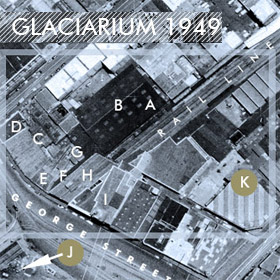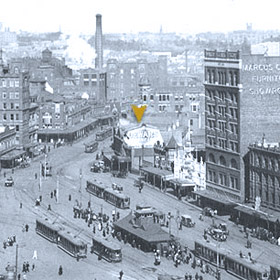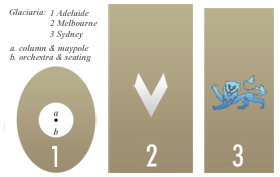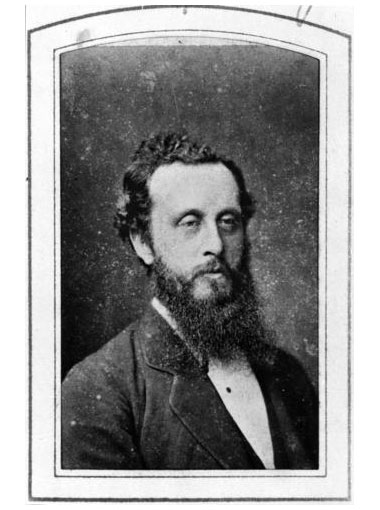Legends
home
Sydney Glaciarium
1907 - 1955
Ice Skating Ring Company
Sydney Morning Herald, Aug 1906
The success of the ice skating rink in Melbourne has led to the formation of the Sydney Ice Skating Rink Company Limited, says Friday's "Age." The company will have a capital of £50,000, of which a first issue of £26,000 in £1 shares has been made. The old Cyclorama and other land in Sydney has been purchased, and it is intended to erect a large rink, and also to provide refrigerated accommodation for 10,000 to 15,000 tons of produce. The directors are Messrs. Buzzacott, Minter, and D. Mitchell, of Sydney. The company has been successfully floated by Messrs. F. Thonemann and Co., of Melbourne.

Former Glaciarium (B) off George Street Railway (Central) Square, Sydney.
NNEW SOUTH WALES PREMIERJoseph Carruthers, opened Sydney Glaciarium on July 25th, 1907, at 849 George Street West, Railway Square, Haymarket. Railway Square was originally known as Central Square and it was the heart of Sydney's modern retail district in the 1800s and early 1900s. That was due in part to Central railway station and its adjacent hotels, erected to serve country visitors arriving in Sydney by train. The ice surface was 54m by 23m and, like Melbourne, it was also sometimes used by circuses, one of the effects of which was a damaged or warped floor said to have been caused by an elephant. Like Reid's earlier Adelaide experiment, this rink was built in the former Sydney Cyclorama Co Ltd building which ceased its last exhibit, The Battle of Gettysburg, at 10 o'clock Saturday September 18, 1906. The cyclorama had operated for 18 years when it was sold to a New Zealand company. By 1891 there were five cycloramas in Australia, one each in Adelaide, Launceston and Sydney, and two in Melbourne introduced by Reed & Gross, two showman who had exhibited in the United States. Cycloramas struggled financially during the 1890s depression and their realism was challenged soon after by motion pictures. The building by architects and engineers Coxon and Cuthbert, who also claimed to have designed Melbourne Glaciarium, was described at the time as follows:

The Glaciarium is something entirely new to the people of Sydney. The main building and its approaches are erected partly on the site of the old Cyclorama, which has been entirely demolished. The public entrance is in George-street, access being gained in the first instance to the booking hall, and thence by a wide sloping passage of easy gradient to the Glaclarlum itself. The main building, while making no pretence to style, is nonetheless imposing on account of its dimensions and appearance of substantiality. Immediately adjoining the entrance and fronting the rink are situated the ladles' and gentlemen's retiring rooms, cloak room, and skate room, etc., all of ample dimensions and comfortably equipped.
The main area is of course taken up with the actual skating floor, which is 180ft long and 76ft wide, with seating accommodation and promenade all round. The roof, the apex of which is 51ft (15.5m) from the floor, is constructed of steel, and is the finest example of its type in the States. The lighting during the day is obtained from roof lights, and also from windows in the outer walls, and is excellent; at night the whole place is brilliantly illuminated with the electric light. At one end there is a small gallery capable of seating from 160 to 200 persons, from which an excellent view of the whole floor can be obtained. The seating accommodation, on a whole, is excellent.

Railway (Central) Square + Glaciarium (gold arrow), Sydney.
There are seats provided for about 1500, and each one should be able to command a first-class view of the floor. Provision has also been made for the supply of refreshments. The ice floor, which is about 4 inches in thickness, is beautifully transparent, every foot of the 7 or 8 miles of piping embedded in the ice being clearly discernible. The refrigerating plant, which comprises a 120 ton ice-making machine, is the latest type of the well-known Hercules design supplied and erected by Mr. C. A. MacDonald, of this city, and the boilers of which there are two, are of the Babcock and Wilcox Co.'s make, and fitted with their automatic chain grates and stokers, so that the company have no fear of any fines on account of a superfluity of smoke emanating from their chimney.
Underneath the rink there is a very large area which the company purpose shortly fitting up as a refrigerating and cold storage depot. The company's engineers and architects were Messrs. Coxon and Cuthbert, who have designed and supervised the construction and equipment of the whole establishment. The contractors for the building are Messrs. Baxter and Hepburn. — The Sydney Morning Herald, Tue 30 Jul 1907, p 4
West's Pictures
in the off-season
The Glaci was also used by West's Pictures in the off-season, opening Saturday December 7th 1907 with a house of thousands, up until early-1916 and perhaps later. The rink was covered for theatre and dance use. West's Pictures also operated at the Olympia in Melbourne with Wirth's, opposite the Glaciarium. Frank Talbot was first to screen moving pictures in Australia at Melbourne Glaciarium (The Argus 18 July 1949 p 5), even before the Tait Brothers, directors of J C Williamsons, presented moving pictures there.

Modifications over the years in Sydney included an iron railing dividing one end of the the ice into a “mugs’ alley” where beginners could hold on with both hands with a mirror in which skaters could see themselves. The bandstand was at the opposite end and in later years, Tom MacKay and his band played during public skating sessions, always finishing with the “Skaters’ Waltz”.

Comparative Ice Pads [1] Adelaide 1904 [2] Melbourne 1906 [3] Sydney 1907
Sydney Glaciarium was managed by Dunbar Poole, and it soon became home to the Sydney Glaciarium Ice Hockey Club and the Sydney Ice Skating Club. George Sydney Buzacott, a prominent Sydney stockbroker and a foundation director, succeeded Poole as patron. Buzacott sometimes collaborated with the Melbourne stockbroking firm of F Thonemann & Co who had publicly floated the Sydney Ice Skating Rink Co. James Thonemann was a player on the first team in 1906, and he also played in the first ever ice hockey games held at Sydney in 1907.

Sydney Glaciarium 1940. Bandstand and small gallery of 200 seats beneath
Professor Claude Langley of Melbourne Glaciarium was one of the first instructors at the Sydney rink, and probably its principal instructor. He was present at the foundation of all three rinks in three states. Photographs of the interior of Sydney Glaciarium (left and above) show it was essentially the same as its Melbourne forerunner, but stripped of Victorian decoration.

George Sydney Vernon Buzacott (1861 - 1929) Prominent stockbroker, foundation director of Sydney Ice Skating Rink Company Limited, and probably Patron of Sydney Glaciarium Ice Hockey Club in the early-1920s.
It had the same steel-framed, open-trussed roof supported on flanking columns with roof lights in alternating bays, typical of the grand 'sheds' of the era, such as Victorian railway buildings. In both, centre-ice was clear of columns; the bandstand was elevated overhead on the end wall with a balcony stair, as in the first London Glaciarium of 1876; and the roof peaked about 15m above ice. It was also similarly decorated like a Swiss alpine scene.
The rink had been built over the freezing plant of the Sydney Cold Stores which naturally provided the ice surface, and heated the seating and service areas. The original management company, South Pole Ice Rink Limited, was absorbed by Sydney Cold Stores Ltd in 1920, when the rink reopened after the First World War. However, the two companies were related and this was an internal restructure aimed at paying dividends to long-term shareholders, raising capital, and changing management practices.
The Sydney Cold Stores plant at 702 – 720 Harris Street Ultimo was registered in 1918 to Sydney Ice Skating Rink and Cold Storage Co Ltd. It was nearby King's Theatre and Films Co Ltd at 730 Harris Street, Ultimo, just like Thring's King's Theatre was nearby the Glaciarium. The cold store manager, William B Doust (1865 – 1937), had been with the company since its inception in 1907, following 20 years with the NSW Fresh Food and Ice Co Ltd. He retired in 1935.
Forty-eight Years
1907 - 1955
Poole retired as manager in 1937 and was succeeded by Reg Leafe ( –1953) until his death in 1953. Sydney Glaciarium finally closed in 1955, two years earlier than the Melbourne rink. Of the buildings flanking the narrow entry to the Glaci on George Street, Wembly House still exists and the shops at 849-855 are now a protected heritage place of high architectural significance due in part to their connection to ice skating history (Technocity / Glaciarium, National Trust Register 6560). However, the actual rink at the rear is gone. Notes: 1. In 1921 Francis William (Frank) Thring (1882 – 1936), the father of actor Frank Thring, leased the King's Theatre building a few doors from the Sydney Glaciarium (1921 Dension Ward Property Rates Assessment, City of Sydney). King’s Theatre and Films Co. Ltd may have been related. It was located near Sydney Cold Stores at Harris Street Ultimo in 1918. Thring began his Melbourne theatrical career in 1911 as a projectionist at Kreitmayer's Waxworks. He opened the Paramount Theatre in 1915 and in 1918 became managing director of J C Williamson Films Ltd. After this company merged in 1926 with Hoyts Pty Ltd to form Hoyts Theatres Ltd, Thring became its managing director. Back in Melbourne a decade later, his Efftee Film Productions studio moved to Wattle Path Dance Palais, St Kilda, the building that became St Moritz Ice Rink in 1938, two years after his death. Among the Efftee Entertainers based at the Garrick Theatre near Melbourne Glaciarium (formerly The Playhouse) were Ada Reeve, whose daughter "Goodie" married Reg MacGillicuddy, and well known soprano Kathleen Goodall, wife of John Goodall, who donated the Gower Cup for women's ice hockey in 1922. Kathleen sings three songs at the piano in the Efftee Studio film His Royal Highness (1932), directed by Thring. It is now freely available in full from the Film Archive. A speech by politician Frank Forde at the Efftee Studio opening in 1931 is available from Australian Screen 2. The Sydney Morning Herald, Thu 28 November 1929, p 12. Clifford Minter BA, LLB (1885 – 1977), a foundation director of Sydney Cold Stores was admitted solicitor in NSW in 1910 and became a well-known Sydney solicitor with Minter, Simpson and Co. He and his wife lived at Rose Bay and had three sons and a daughter from 1919. The couple visited New York and London in 1925. [405] Minter eventually became chairman of directors of Sydney Cold Stores, the management company of Sydney Glaciarium. He was president of the Aberdeen Angus Society, and in 1946 he was appointed vice-chairman of Nestle and Anglo-Swiss Condensed Milk Co. (A/sia), Ltd. His father was Alexander Robert Minter (1854 – 1929) a partner in the law firm with Edward Percy Simpson (1858–1931) and his son, Edward Telford Simpson (1889 – 1965), later chairman of the National Consultative Council (1936-41). His Great Grandfather was George Minter (1790 - 1871) of Canterbury and Rochester in Kent England, where Henry Newman Reid was born. [405] 3. The Sydney Morning Herald, Thursday 28 February 1929, p 12. George Sydney Vernon Buzacott (1861 - 1929) of the Sydney stockbroking firm of Buzacott and McKeown (Hordern Utz and Bode after a merger in 1938), was one of the best-known figures on the Sydney Stock Exchange, having been a member for more than 30 years. This family was probably well-known to the Congregationalist minister Rev John Reid, father of Henry Newman Reid. George's father was Rev Aaron Buzacott the younger (1829–81) of Kent where Reid was born, and his grandfather was Aaron Buzacott the elder (March 4, 1800 - September 20, 1864), a Congregationalist colleague of John Williams (the 'Martyr of Erromanga'). George never married, he was a prominent official of the Australian Jockey Club, a member of both the Union and Tattersalls Clubs, and probably patron of the Glaciarium Ice Hockey Club in the early 1920s, succeeding Dunbar Poole (name possibly mispelt in Club minutes). It was the forerunner to the New South Wales Ice Hockey Association. A W Buzacott took over as a director of Sydney Cold Stores in June 1929 after George died. (SMH: 26 Jun 1929 p 17). Samuel Hordern later joined Buzacott's firm. Hordern married a grand-daughter of W L Baillieu in Melbourne and his father had married a daughter of Premier Sir John See who was a provisional director of the Sydney rink syndicate. 4. Philip Charles Mitchell (1840 – 1928), managing director of D Mitchell & Co, wholesale grocers of Sydney, Newcastle and London, was the third director of the Sydney Ice Skating Rink Company Limited. Born in Ipswich Queensland in 1840, he succeeded his father David Mitchell, founder of the grocery business in 1866, when he died in the early 1890s. He was also a director of the Daily Telegraph Newspaper Co. ( Obit SMH Wed 8 Feb 1928 p17) Robert Reid, a very influential uncle of Henry Newman Reid, attended a large farewell for P C Mitchell at the Hotel Australia prior to his visit to London in 1901. Reid had his headquarters there. (SMH Sat 13 Apr 1901 p 5). Mitchell was re-elected director of Sydney Ice Skating Rink Company Limited in 1912 (SMH Mon 2 Dec 1912 p11). 5. The West Australian, Perth, Wed 22 Jan 1908, p 2. According to this 1908 newspaper article, F Coxon of the firm of Messrs D Coxon and Cuthbert of Sydney, architects and engineers of Sydney Glaciarium, had started the frozen meat trade in New Zealand 26 years earlier and had built there 19 different freezing works, and more recently 23 in Australia and two in the Argentine Republic, while his partner Cuthbert had 17 years experience in Australia and Argentine. 6. The Sands Directory, 1918, (Chris Hampton, email 13 Jan 2012). Transcript: 702 – 720 Harris Street. Sydney Ice Skating Rink and Cold Storage Co., Ltd—W. B. Doust, J.P., Manager. Tel. M1474 and M1668. 730 Harris Street. King’s Theatre and Films Co., Ltd. SMH 18 Dec 1920 p 15, Part transcript: Sydney Cold Stores Ltd was registered in June 1922 and took over the business under agreement of Sydney Ice Skating Rink and Cold Storage Co. Limited as from April 30. The Sydney Morning Herald, Tues 16 Mar 1937: William B. Doust (1865 – 1937) was a resident of Arncliffe for more than 42 years and an alderman of Rockdale council for some years. He was associated with the NSW Fresh Food and Ice Co Ltd at Darling Harbour for 20 years, and resigned from the position of secretary in 1907 to become manager of Sydney Cold Stores Ltd. The former was the first commercial-scale freezing works in the world established at Darling Harbour by Nicolle, Mort and others after they bought-out James Harrison's Sydney Ice Co. The story of Sydney's first ice is briefly recounted in the Dictionary of Sydney. Doust retired from this position in 1935.





















